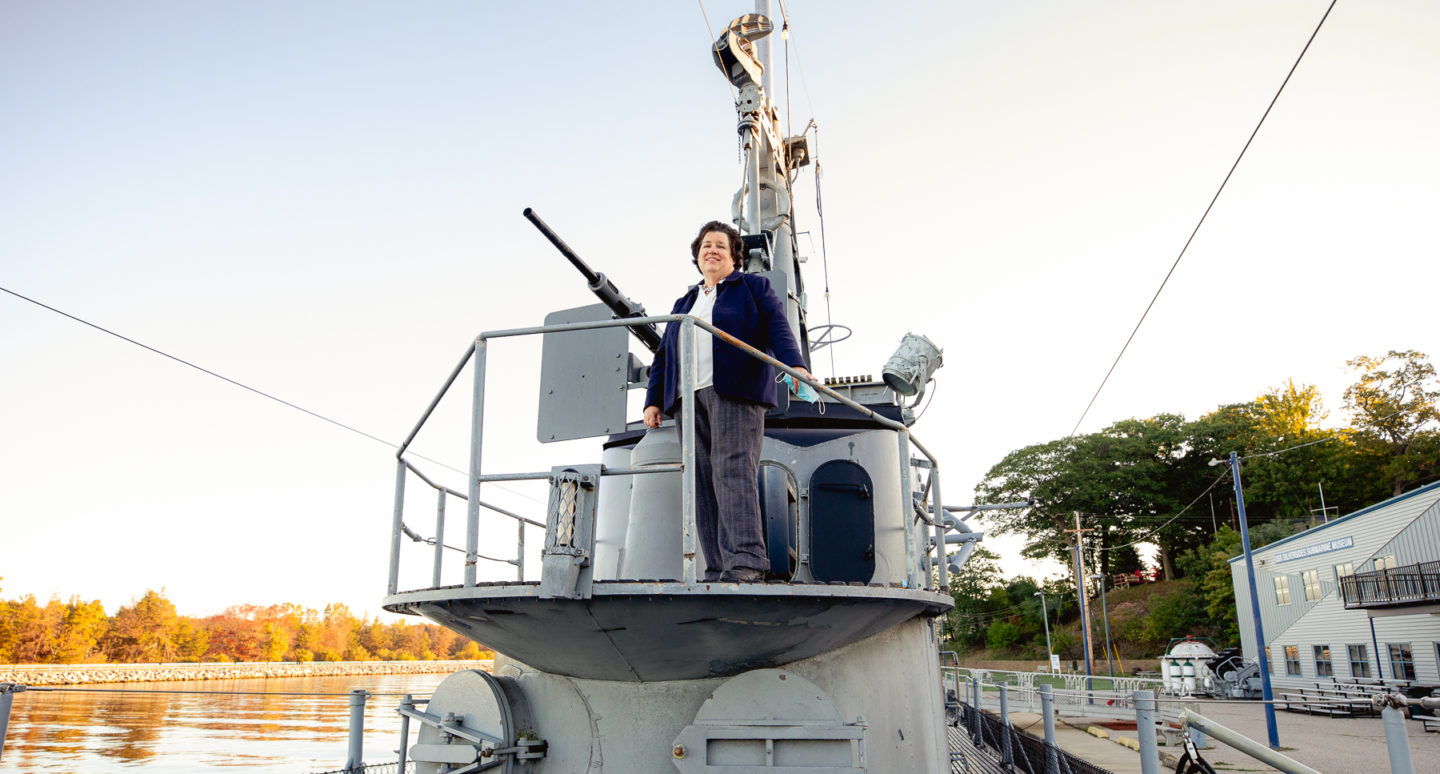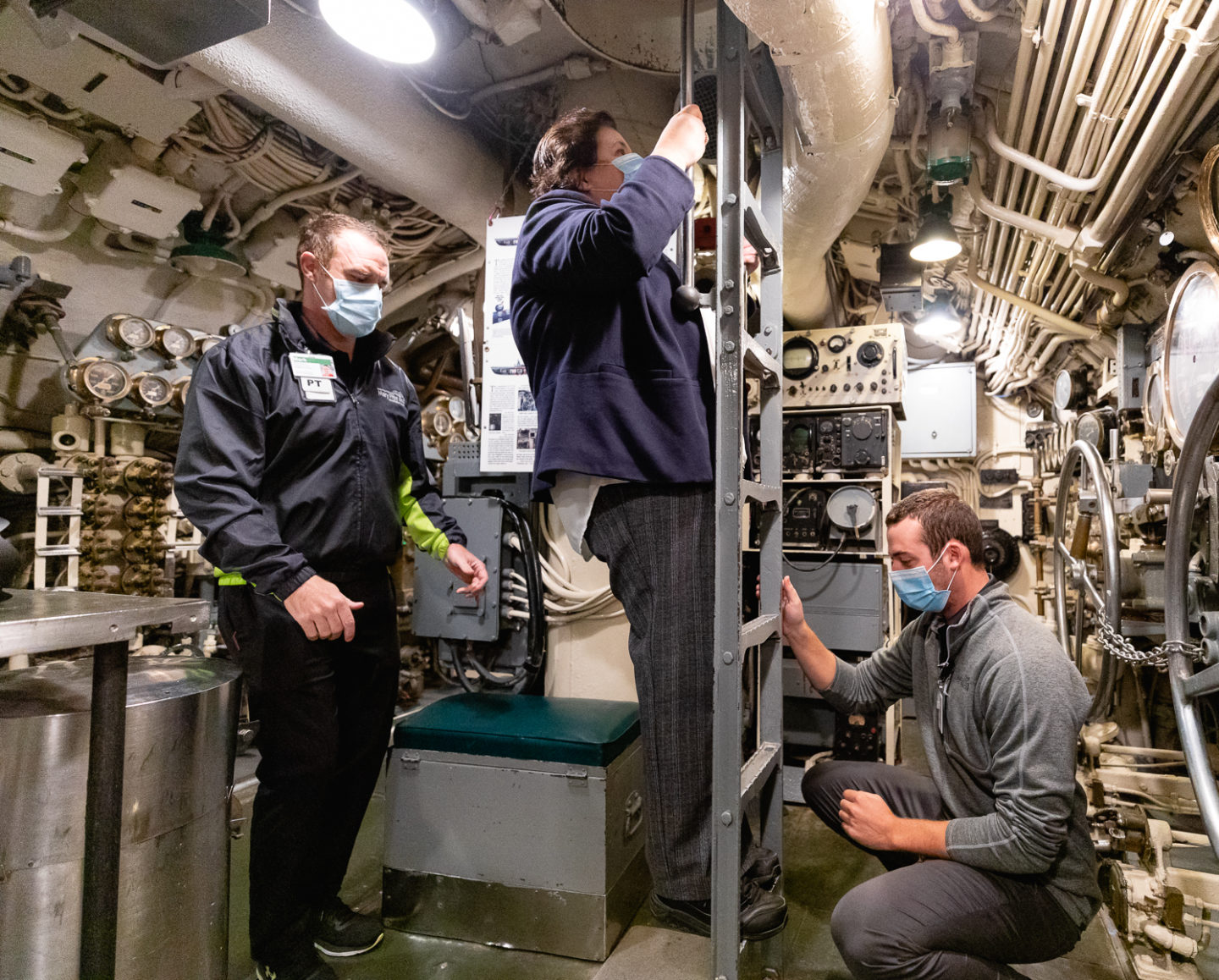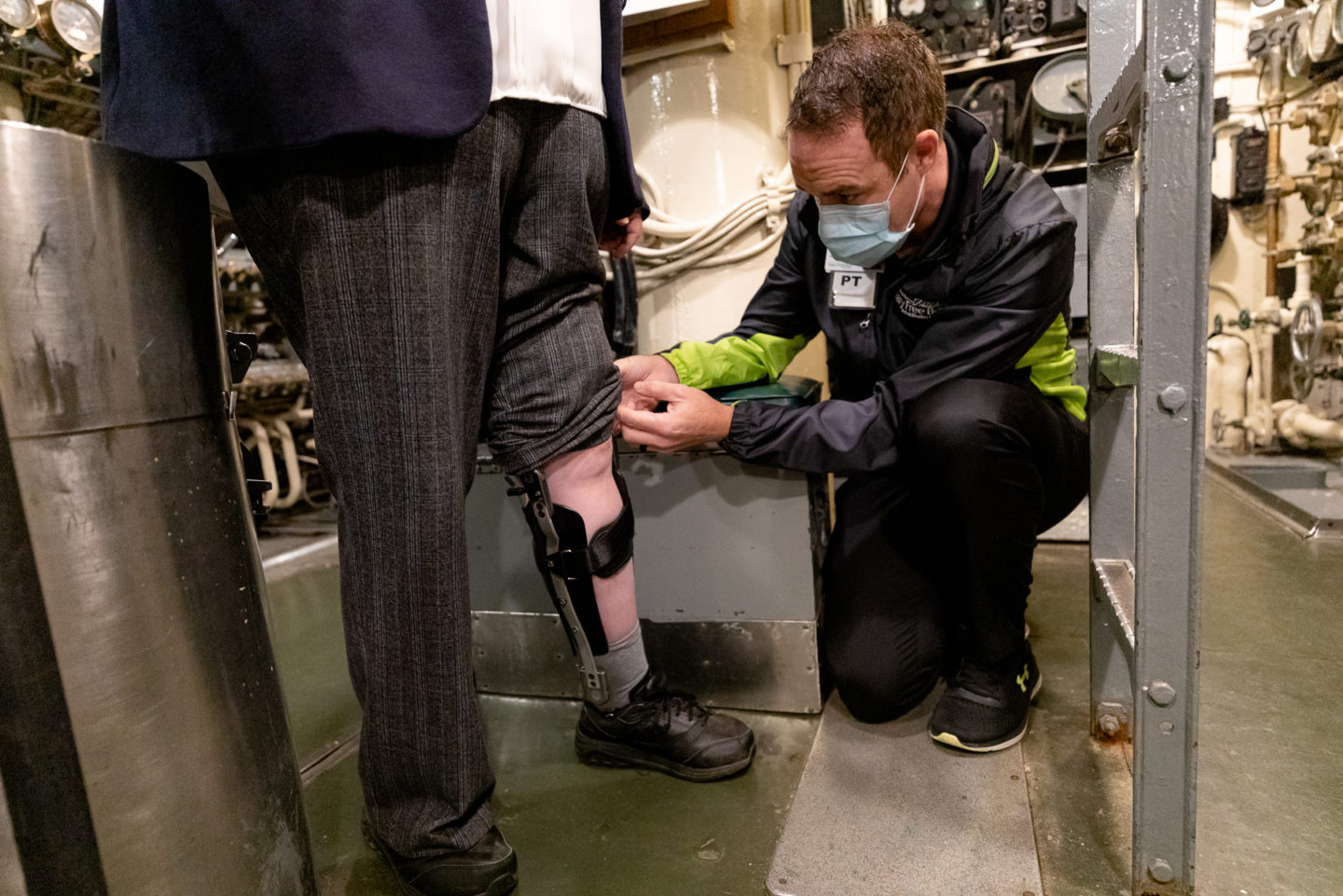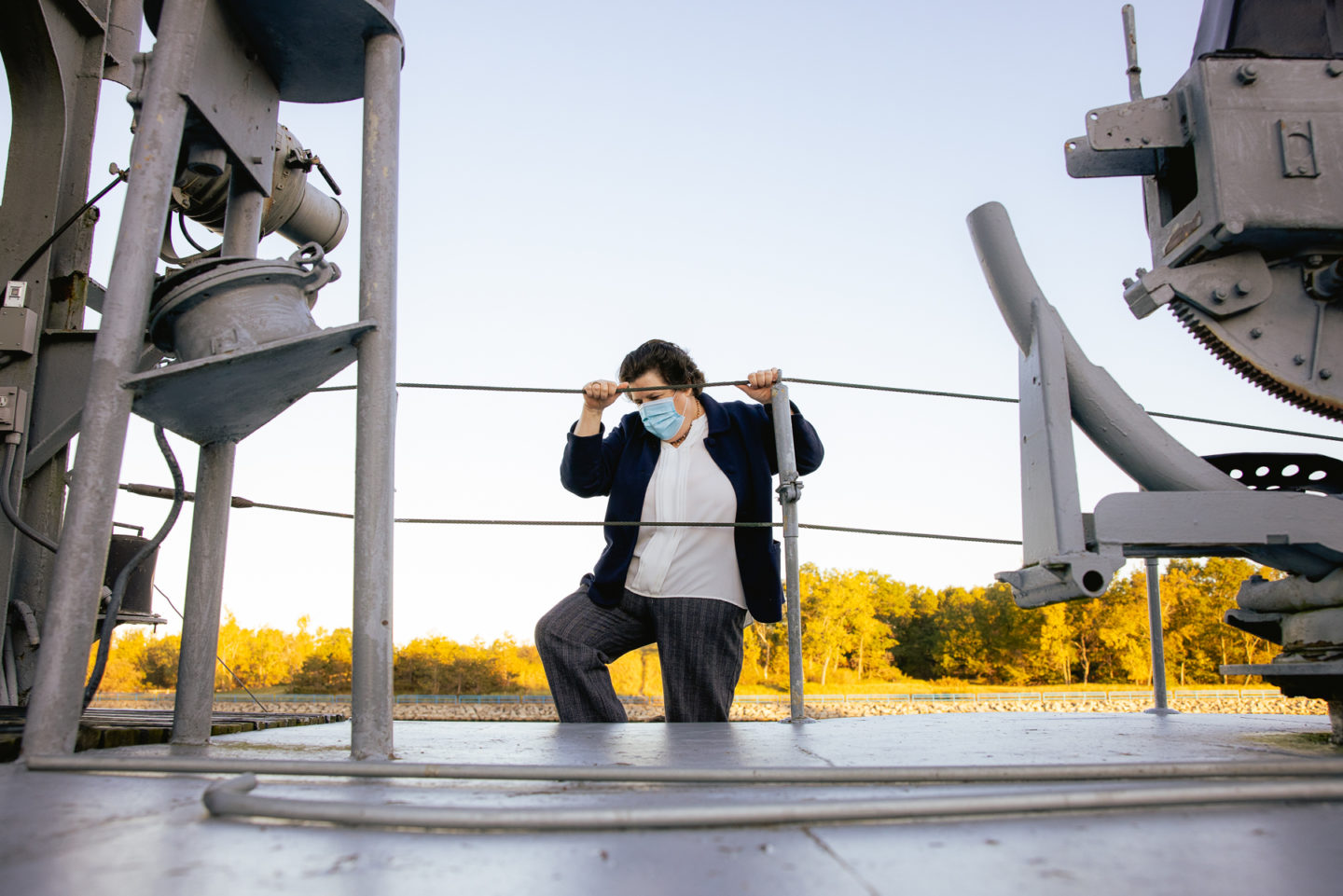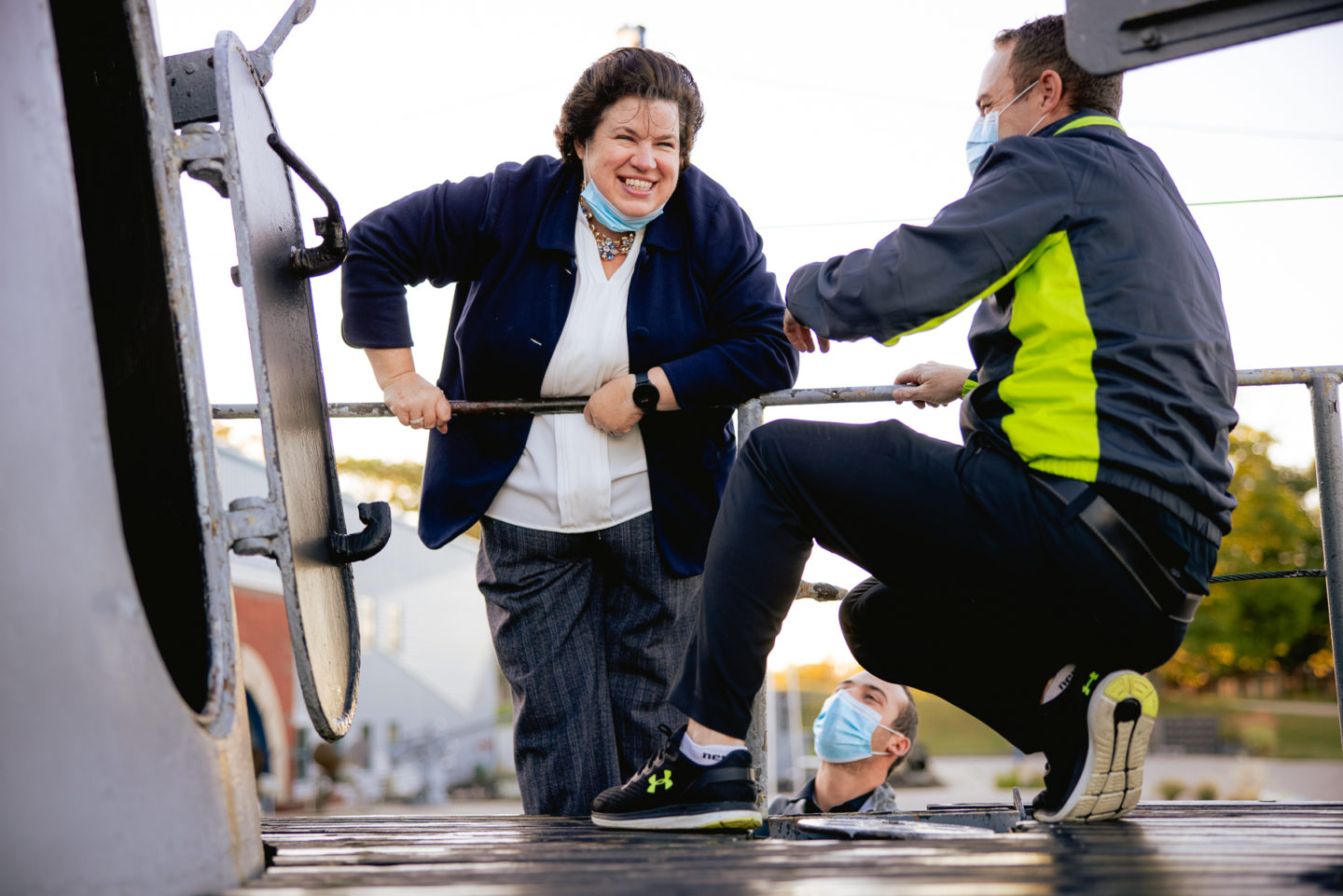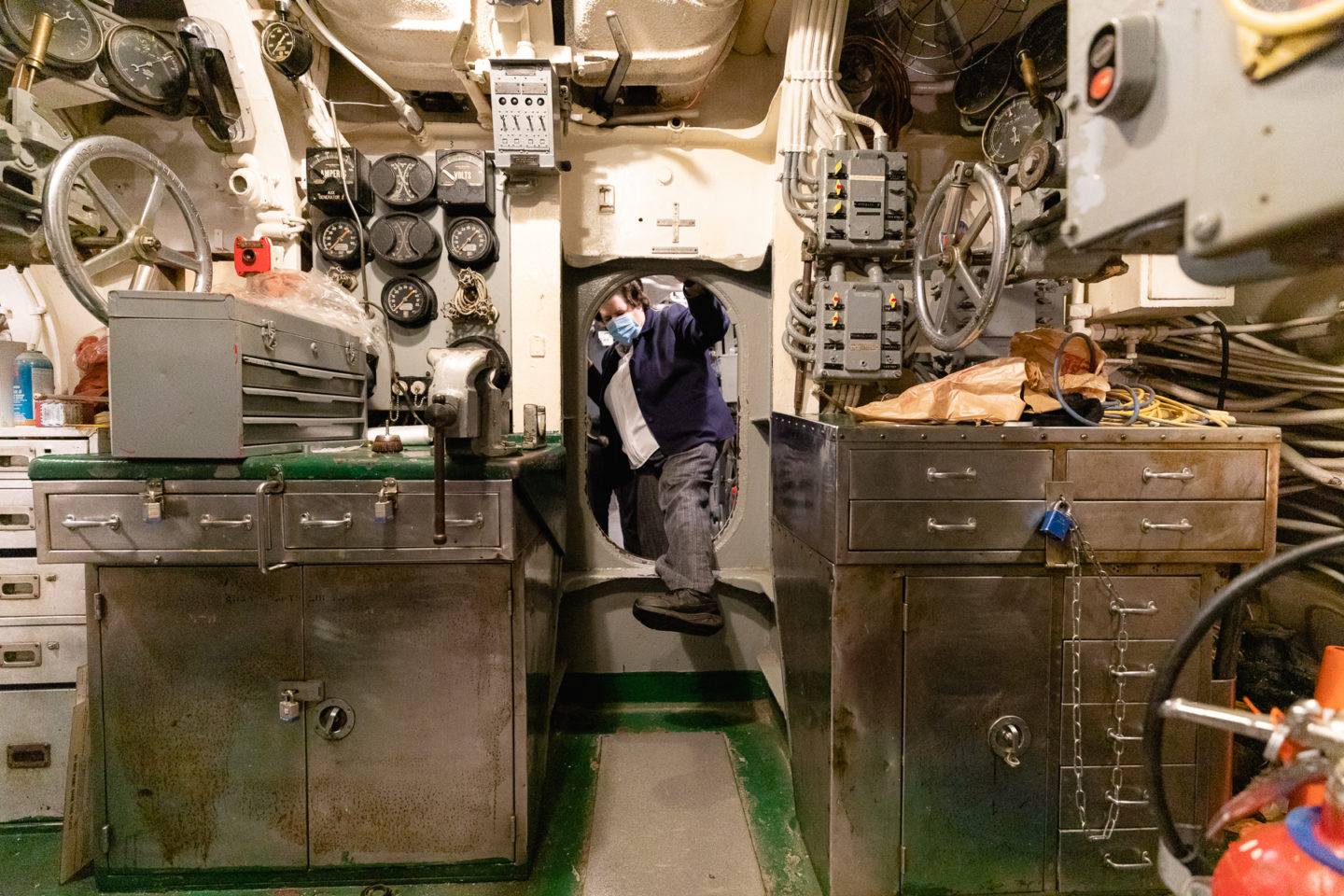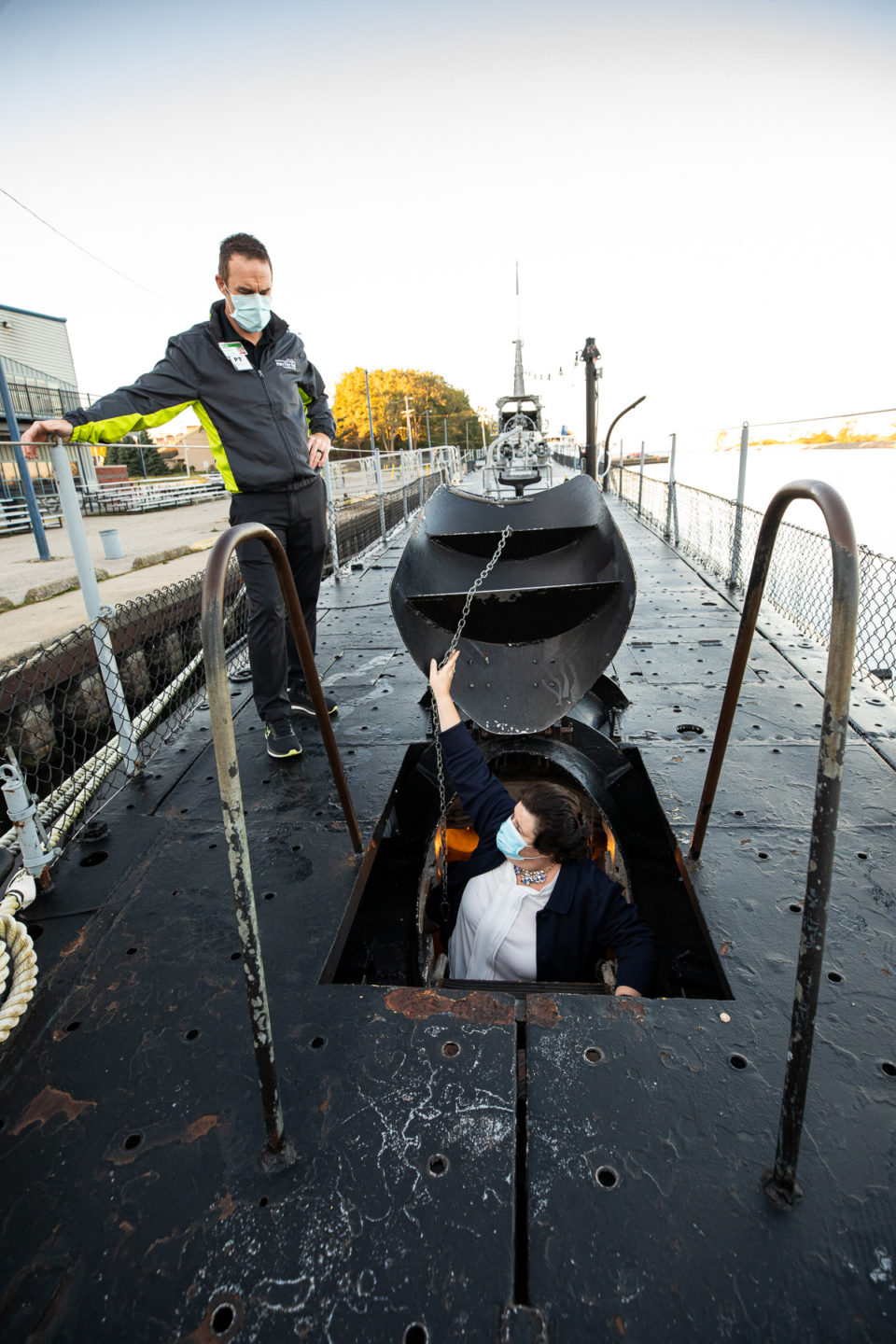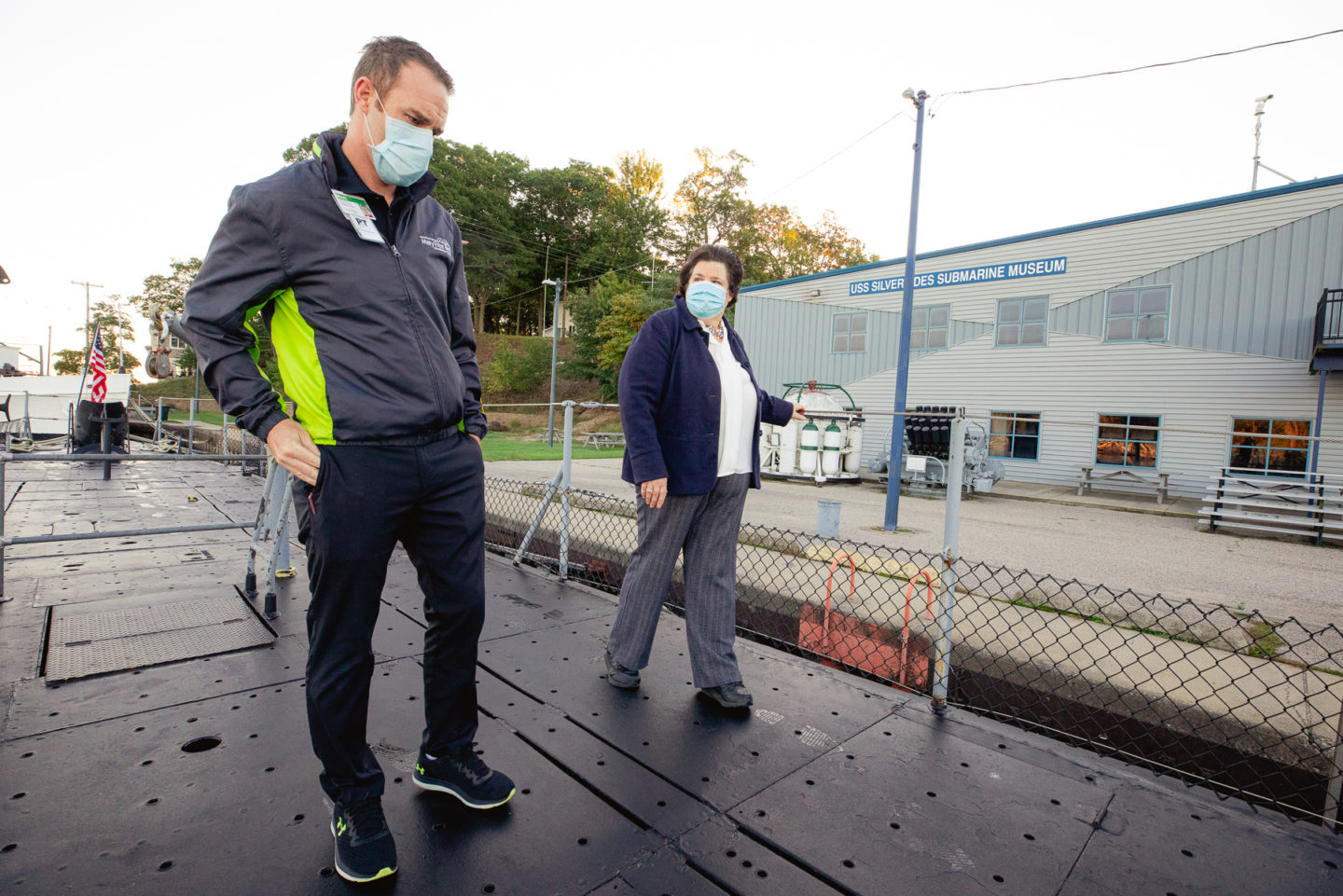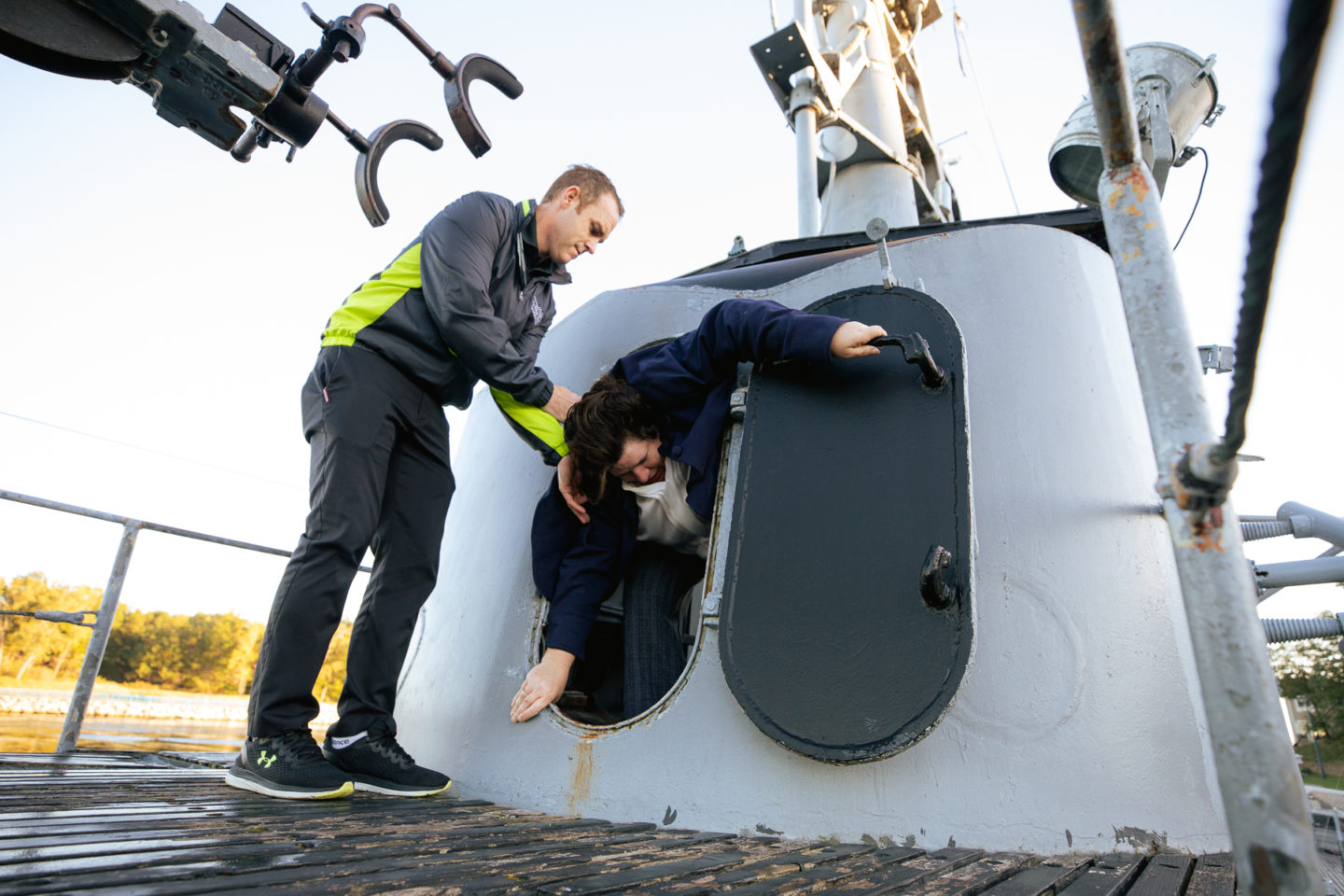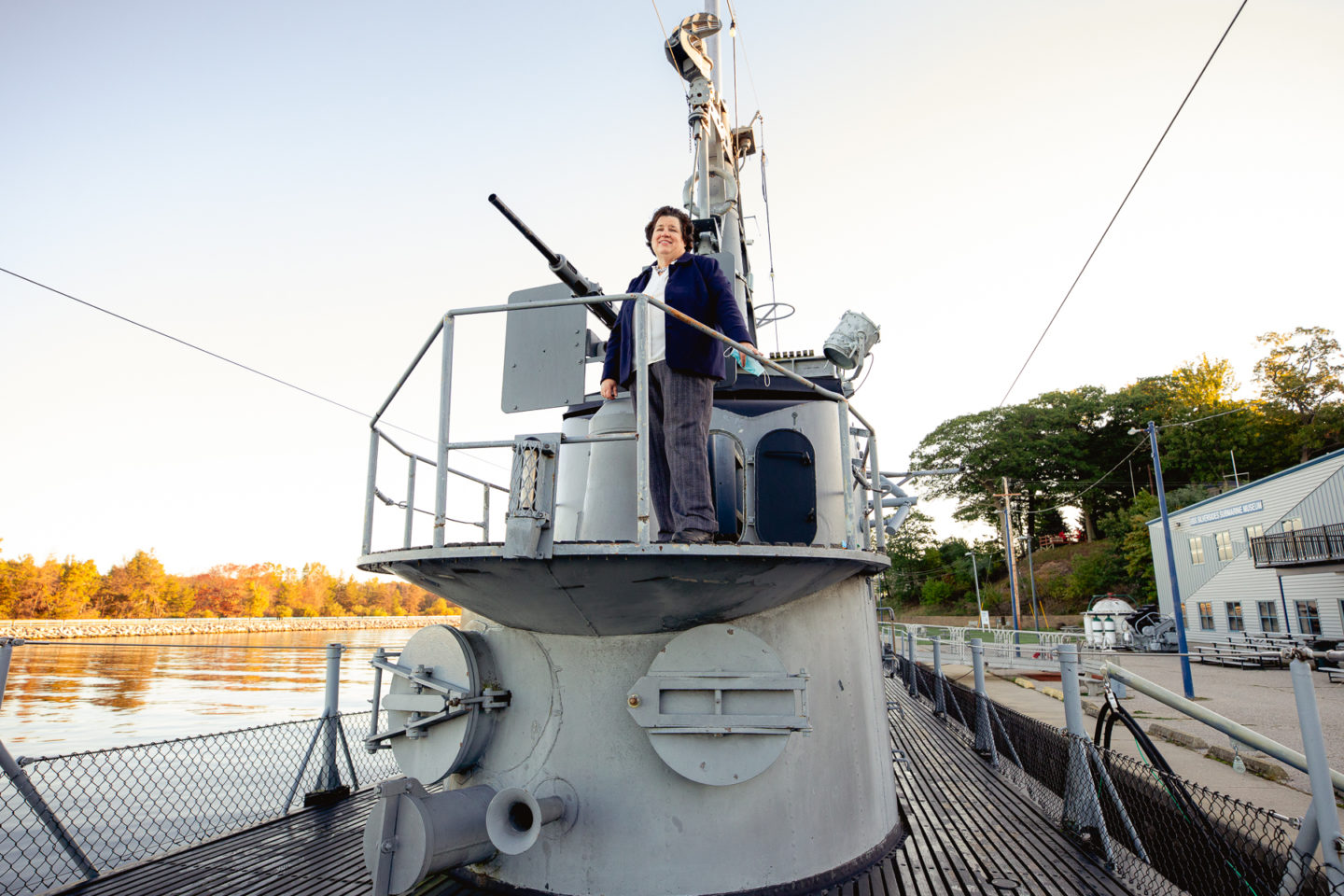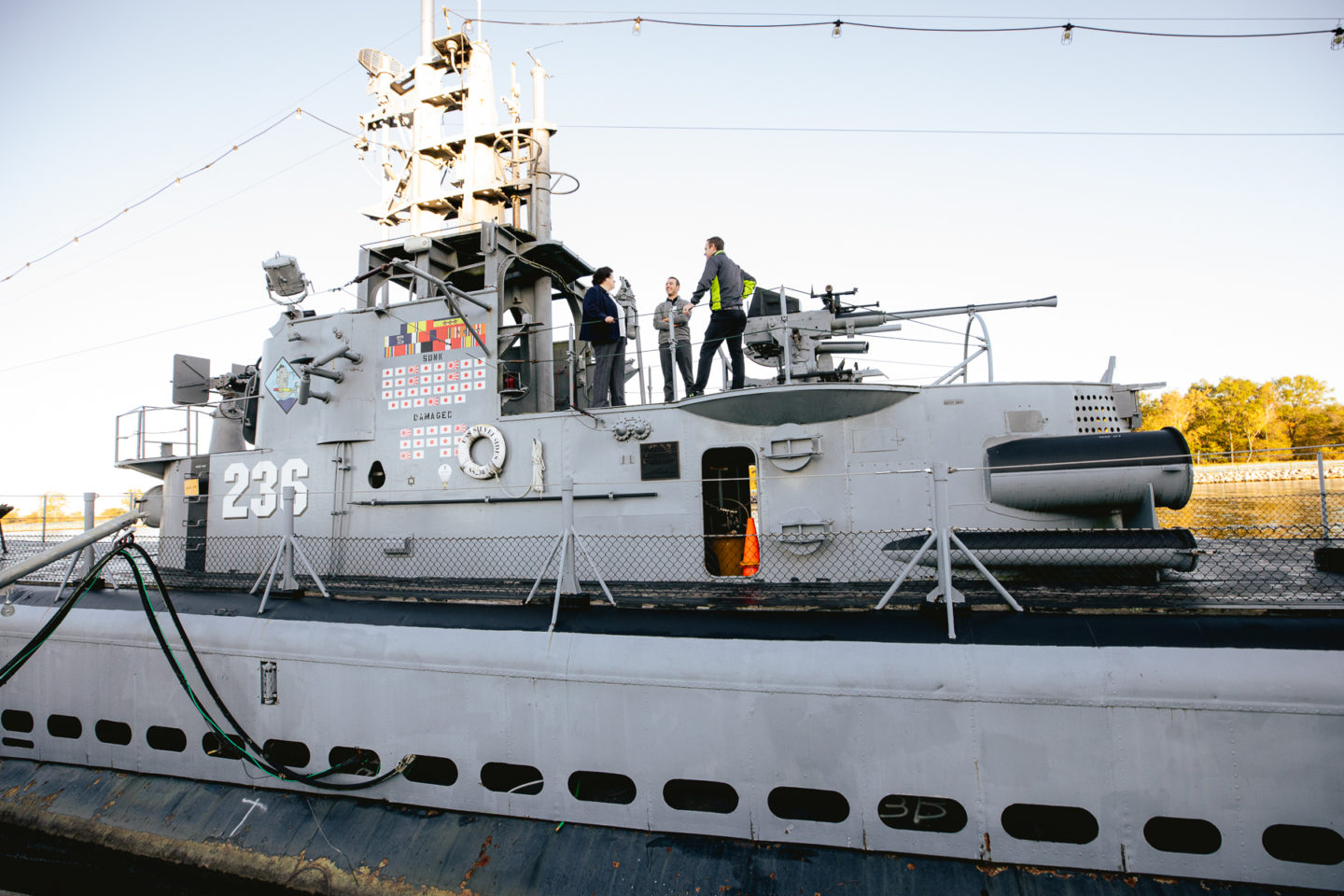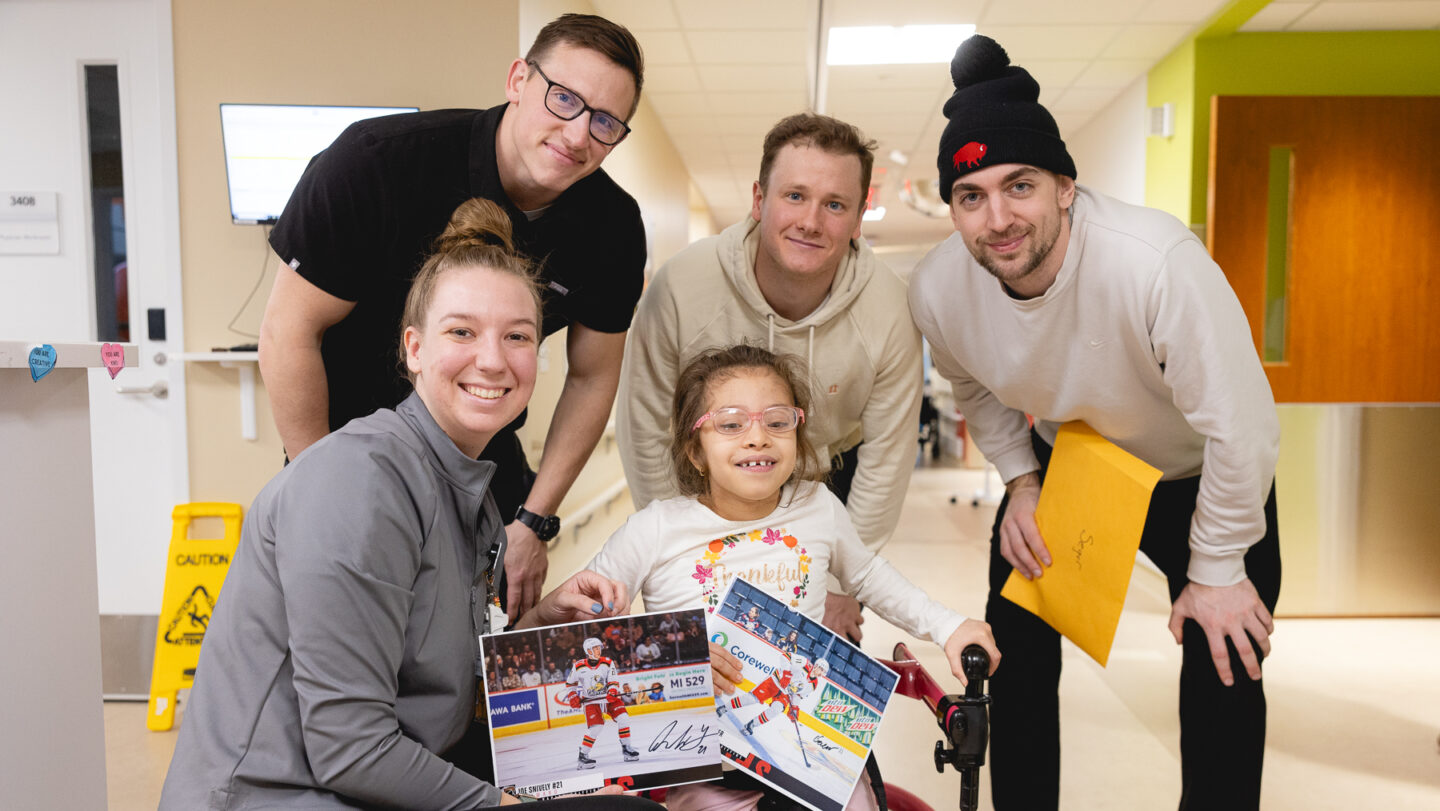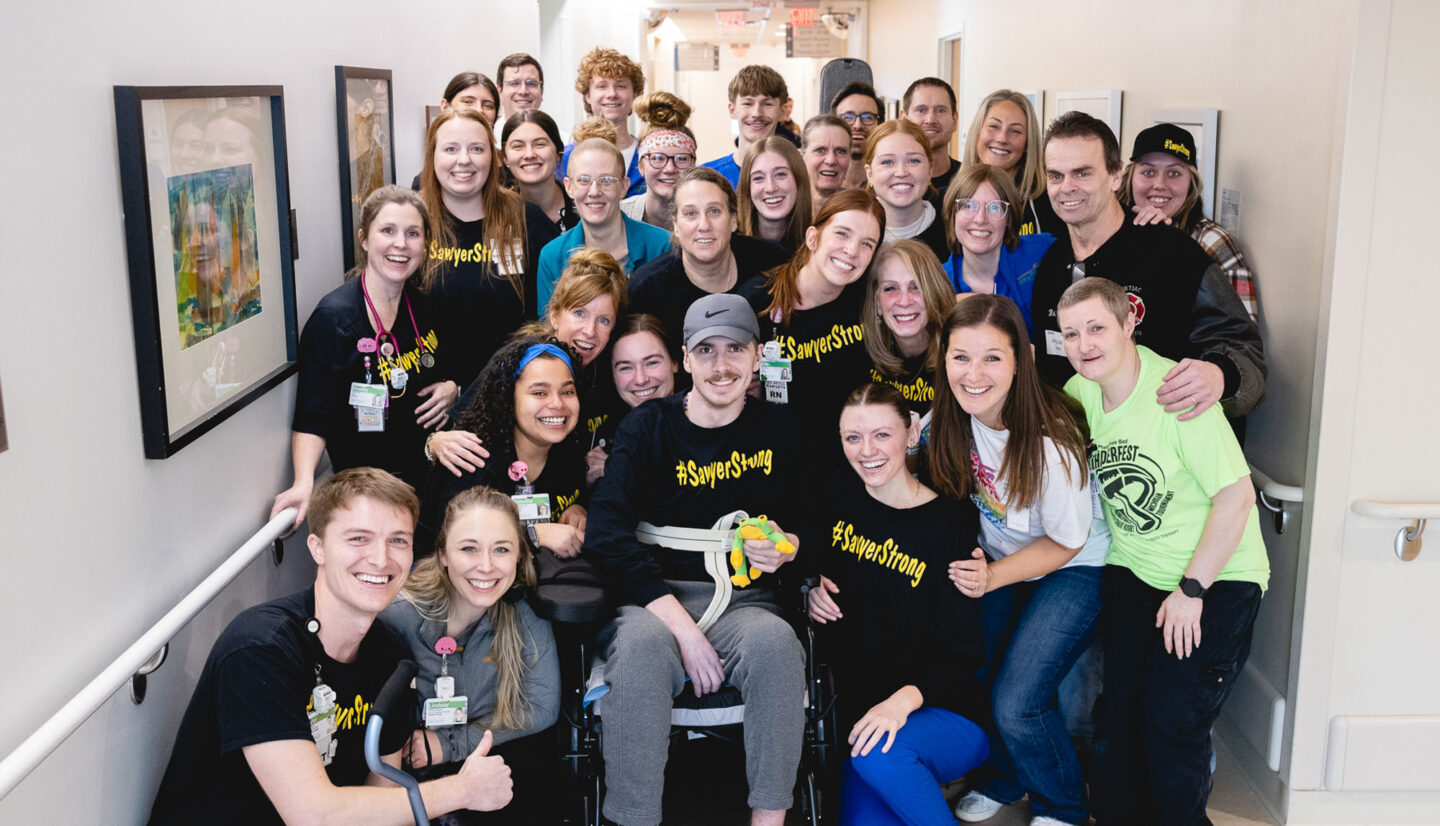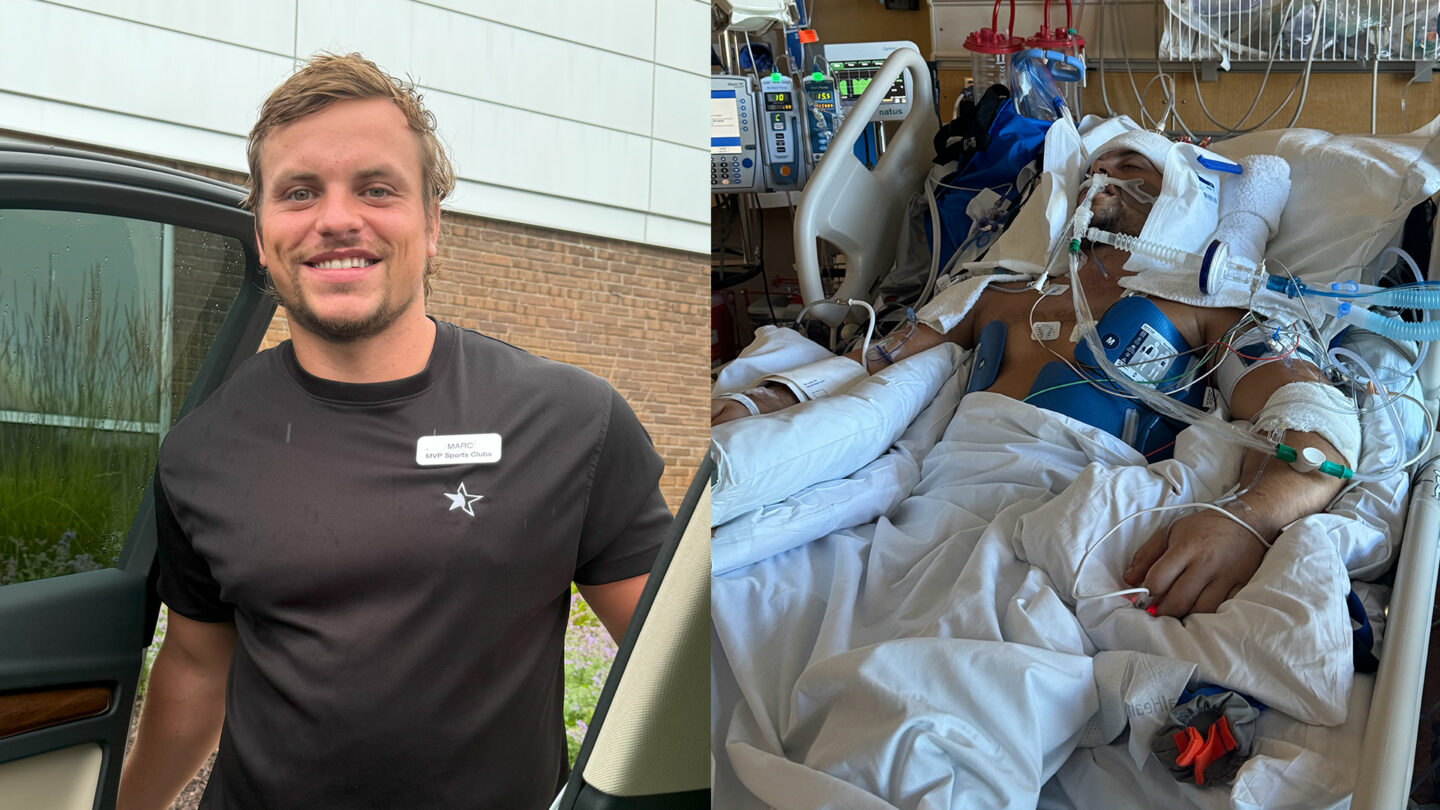Home / Peggy and her Mary Free Bed team take rehabilitation aboard USS Silversides
Posted on November 10, 2021
Peggy and her Mary Free Bed team take rehabilitation aboard USS Silversides
As executive director of the USS Silversides Submarine Museum in Muskegon, Peggy Maniates is passionate about honoring U.S. veterans through education and preservation of the World War II vessel.
“Our guests have the opportunity to step back in time and look at history through the eyes of those who lived it,” Peggy said. “The submarine is a living, learning laboratory – a snapshot into the past. You can walk where the Greatest Generation walked, understand the challenges they faced and all they did to secure the freedoms we as Americans enjoy today.”
That’s why it’s so important to Peggy to have full access to the submarine and its inner workings.
“You need to understand everything that goes on in order to make the most informed decisions, especially when it comes to preserving a historic vessel,” said Peggy, who’s not a veteran herself but “many people I love are.”
After Peggy, 56, had hip replacement surgery, she developed femoral neuropathy. Weakness and loss of feeling in her leg significantly affected her ability to move, preventing her from getting around. She was afraid she’d be limited to using a walker or wheelchair, and that her days navigating the USS Silversides were over.
Then she was referred to Mary Free Bed. She began physical therapy with the Norton Shores team in March.
“They gave me hope,” Peggy said. “They thought outside the box and looked at what I wanted to accomplish. Through trial and error and lots of physical therapy, I got there.”
Peggy climbs a ladder inside the pressure hull of the USS Silversides, under the watchful eyes of physical therapist Mark Stevens, left, and PT student Anthony Woodward.
“I was climbing the ladder to go into the conning tower of the sub,” Peggy said. “It’s a small, watertight compartment within its sail that’s equipped with instruments and controls and from where the periscopes were used to direct the boat and launch attacks.
“As director of the museum, I need to go places that are generally not open to the public so I can see and understand the continuous preservation we must do to protect an 80-year-old World War II vessel.”
Unable to stand or walk without support, an orthotist with Mary Free Bed Orthotics & Prosthetics + Bionics in Muskegon fit Peggy with a stance-control Knee-Ankle-Foot Orthoses (KAFO) for stability.
Here, Mark checks the hinges at the knee and ankle before Peggy attempts to climb the ladder.
“This was an important safety check prior to her climbing,” Mark said.
Peggy wasn’t able to navigate the cables in her first attempt to reach the ladder leading to the periscope from outside, so the team successfully took a different route.
“A lot of what Peggy wanted to achieve, we simulated in our office,” Mark said. “But we had to get on the sub to actually try it.”
Success!
Peggy climbed the height of the ladder, led by Mark and followed by Anthony.
Each compartment on the submarine is divided by waterproof bulkheads that could be individually sealed if flooding occurred when the vessel was submerged, Peggy explained. She’s shown climbing through the hatch between the officers country and the control room.
After navigating the length of the submarine, Peggy climbs through the rear hatch of the aft torpedo room where she’s greeted by Mark.
“She never thought she’d be able to do this again,” he said.
Keeping the USS Silversides as close to its original condition as possible means this area can be slippery – part of why the vessel isn’t accessible to people with physical disabilities.
“That makes it extra challenging,” Mark said. “Due to a lack of sensation, Peggy doesn’t always know when her foot is on the floor. Making sure she’s aware of floor contact is crucial, especially on the sub where it can be slippery.”
Climbing up from inside the submarine through the conning tower to the bridge was a bit difficult.
“It’s the smallest hatch and has the least handrails, so this took trial and error,” Mark said.
“This picture makes me smile,” Mark said. “Peggy never thought she’d get up there again. She was beaming.”
Peggy, Mark and Anthony take in the view from the bridge.
“Peggy has met goal after goal after goal and has gone from thinking she would never be able to do something to having hope that she can,” Mark said. “Working with Peggy has been so much fun, despite many challenges.
“She’s really made me think outside the box. I’ve never done a therapy session on a submarine, and I’m not sure I ever will again!”
To maintain historical accuracy, functionality and watertight nature, there’s no way to make the USS Silversides fully accessible, Peggy said. The museum offers guided tours via video and PowerPoint presentation for those unable to safely go inside.



